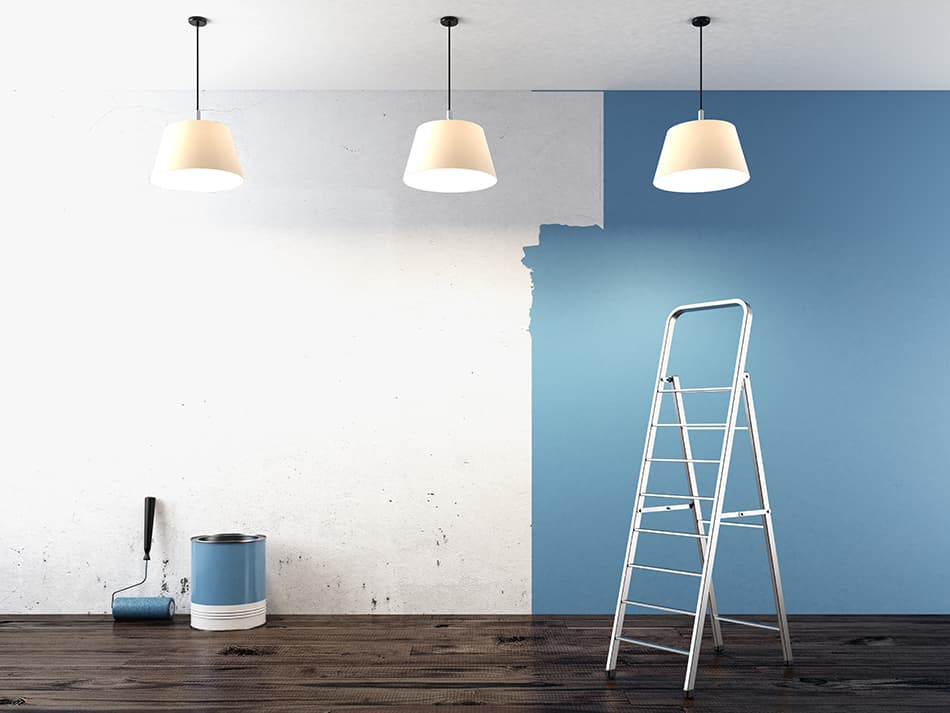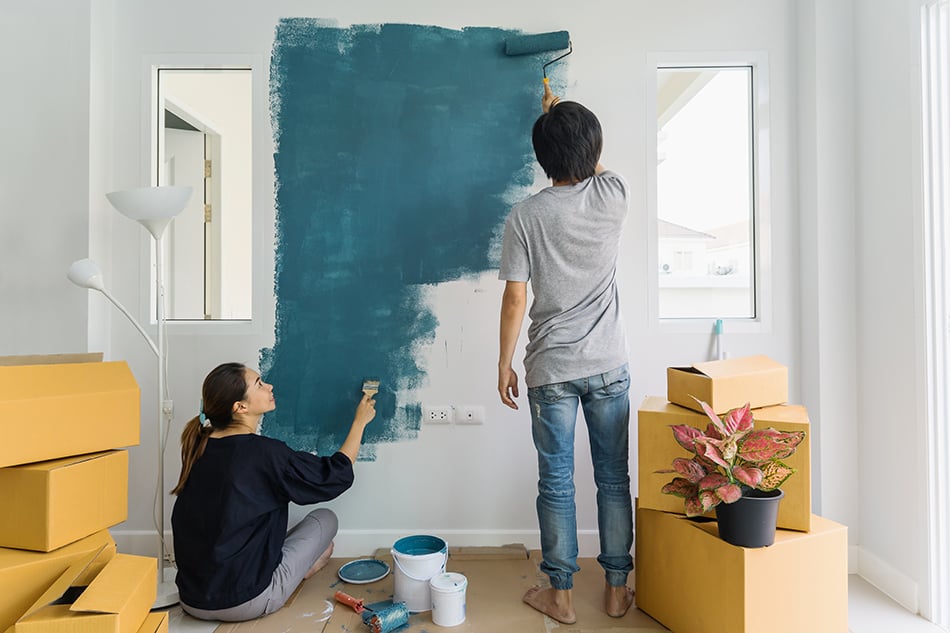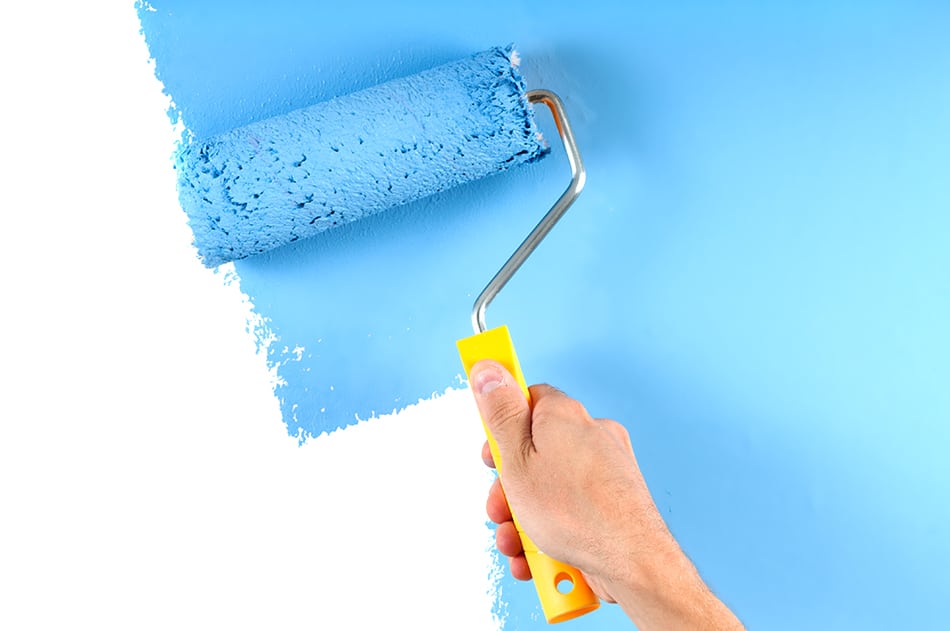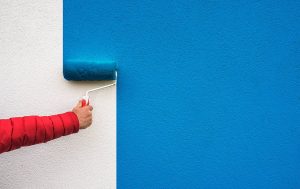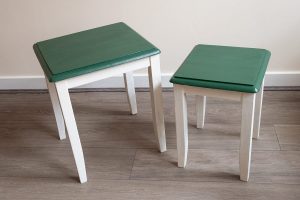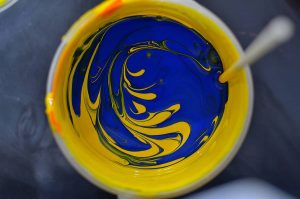Whether you’re using paint to transform an entire room or upcycle an old piece of furniture, you need to pay close attention to how long your specific type of paint takes to dry. Attempting to apply another coat before the first coat is ready can result in streaks and drags, which is tricky to fix and will take more time. Waiting too long between coats won’t harm your paint job, but it will make the whole project take much longer than necessary.
Modern paint technology means that most paints available today dry very quickly, but the time you should allow between coats can vary quite considerably depending on the paint formula. Different types of paint, different finishes of paint, and paints made by different manufacturers will all have slightly different formulas, and this will affect the expected drying time.
Different Levels of Drying Paint
The drying times listed on a paint can be confusing if you aren’t experienced in painting and decorating, but they’re easy to understand once you know what each drying time means.
Touch Dry Time
The length of time it takes for the paint to be dry to the touch is referred to as ‘touch dry time.’ At this point, you will be able to lightly press your fingertips to the paint without marking it and without coming away with paint on your hands. Once your wet paint is touch dry, you can allow pets or children back into the space without worrying that they’ll end up with paint stains on them, but it isn’t dry enough to be recoated at this point.
Recoat Time
The recoat time indicates the amount of time you need to let wet paint dry before you can apply an additional coat. This time is longer than touch dry time because the paint needs to have hardened a little more before it can take a roller or paintbrush rubbing up against it with no risk of smudging or paint being dragged off. You will need to allow the same amount of time between each coat, and this will ensure an even, flawless paint job. The recoat time listed refers to the minimum amount of time that should pass between coats; you can wait longer if you prefer.
Cure Time
The cure time refers to the amount of time it takes for the paint to have fully hardened and become washable and hardwearing. Many people are surprised by the length of time this can take, which can run into several weeks and even months for some types of paint. Until the paint has fully cured, you should refrain from pushing any furniture up against it or scrubbing it. The cure time differs drastically between paint types and can also be affected by climate conditions.
Oil-Based Paint
Oil-based paint is more hardwearing than water-based paint and is therefore usually used for wood trim and high traffic areas of the home. If you want your paint to cure quickly, then oil-based paint is a good choice because it is typically completely hardened in just seven days. However, the drawback of oil paint when it comes to drying time is that you’ll be waiting quite a while between coats, which can make a painting project drag on for several days.
Typically, oil-based paints are touch dry within four to eight hours, though you should refer to your paint can information for a more specific touch dry time. If you can, it is best to avoid touch oil-based paint even once you believe it to be touch dry, as fingerprints will show up very obviously in this type of paint. Most oil paints require a waiting period of 24 hours between coats, as they need to be fully dry before they can tolerate an additional layer of paint with no risk of damaging the existing paintwork.
Water-Based Paint
Water-based paints, when it comes to interior painting, are usually known by most people as latex paints. These types of paints, unlike oil-based paints, have water content. The water evaporates, which is what causes the paint to dry. The benefit of water-based paints is that they can dry incredibly quickly, and in some cases, may be touch dry in as little as 30 minutes. You will also be able to complete a project much quicker using water-based paints compared with oil-based paints because the recoat time is generally between one and four hours.
Interestingly though, the cure time for water-based paint is much longer. On average, most water-based paints will have fully cured in 30 days, but this can be extended by several weeks if the climate conditions are not ideal. The finish of the water-based paint will affect the drying time, and as a general rule, the glossier a paint is, the longer it will need to dry between coats. This is because water-based paints contain binders, which work to hold the paint pigments together.
Matte paints will contain fewer binders, and glossy paints will have a higher level of binders. The more binders in a paint, the longer it will take to dry. If you are in a hurry to complete a project, flat or matte paint will work best as this is touch dry in 30 minutes to an hour and can be recoated in one to two hours. Eggshell is also a good option because it is touch dry in one hour and can be recoated after two hours. The drawback of matte paint is that it is the least hardwearing, while eggshell offers a little more protection.
When it comes to water-based paints that need to be hardwearing, semi-gloss and gloss finishes are the most reliable options. These will usually be touch dry in one to two hours and can be recoated after two to four hours. You should ideally refer to the information on your paint can as these times are a guide and can vary depending on the paint formulation.
Factors Affecting Paint Drying Time
The amount of time it takes for paint to dry can be affected by various factors, so it’s a good idea to make adjustments to your space or application method to create ideal paint drying conditions if you want your paint to dry faster.
Temperature
The ideal temperature for water-based paint to dry is around 70 degrees Fahrenheit. This type of paint won’t dry well in cold temperatures because it requires the water to evaporate in order to dry, which will happen faster in a warm, but not hot, environment. By comparison, oil-based paint hardens by oxidizing, so it doesn’t rely so much on temperatures to dry quickly. Oil-based paints will dry well anywhere between temperatures of 50 and 90 degrees Fahrenheit.
Humidity
Humidity can hinder the drying process of water-based paint because the level of moisture in the air affects the ability of the water content in the paint to evaporate. Ideally, you want an average level of humidity for your paint to dry quickly. If you’re painting in humid conditions, then you should shut the windows and put a fan on or turn on the air conditioning. If it is warm outside, then opening the window can help the paint to dry, but if the humidity is high, then it is better to keep windows closed. Oil-based paint is not affected by humidity.
Application Method
The way you apply your paint will impact the expected drying times. Using a paint roller or paint brush applies thick layers of paint, and therefore paint will take longer to dry when this type of method is used. A paint sprayer is the best method to use if you are in a hurry. This is because sprayers apply a very thin layer of paint to a surface, allowing them to dry out more quickly. The application time itself is also generally shorter when using a sprayer as you can cover large areas fast, dramatically cutting down the time it takes to complete a project. When using a sprayer, even gloss paints can be touch dry in as little as 30 minutes.
It can be frustrating to wait for the paint to dry in between coats, especially if you’re using gloss paint or oil-based paint, but don’t be tempted to take a shortcut, as this typically results in streaks and a poor paint job. You might be tempted to apply paint in thick coats to cut down on the number of layers you’ll need and speed up the project, but this is also a bad idea.
Thick coats of paint will cause drips and give the surface an uneven look. Thick coats will also take much longer to dry than expected, so you won’t actually be saving time. The best method of painting to achieve a professional finish is to apply many layers of thin coats, as opposed to minimal layers of thick coats, and waiting the necessary time between coats to ensure the paint is fully dry.
